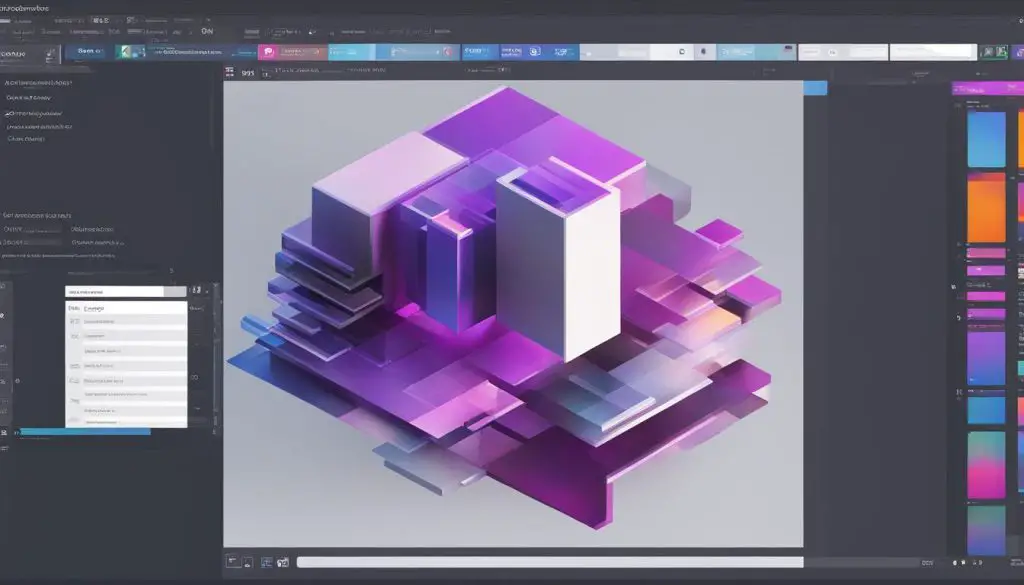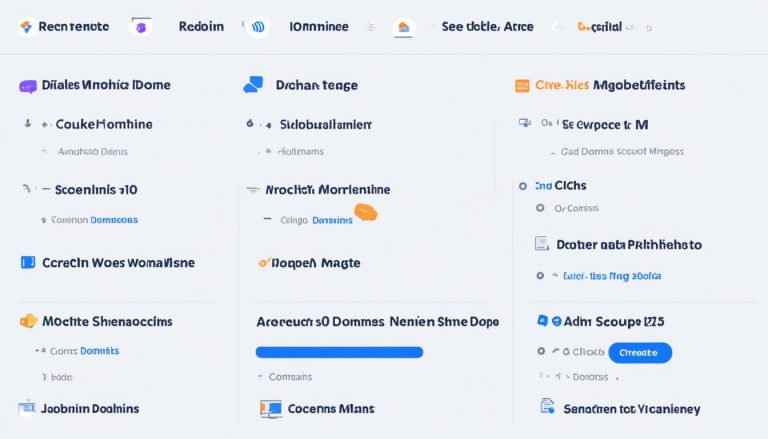In a Nutshell: What is Groovy?
Groovy is a programming language that has gained popularity for its simplicity and versatility. It is an object-oriented language that runs on the Java Virtual Machine (JVM) and combines features of both dynamic and static languages. With its intuitive syntax and seamless integration with Java, Groovy has become a popular choice for developers looking to boost their productivity and enhance their applications. In this article, I will explore what Groovy is, its key features and advantages, and how it compares to Java.
Key Takeaways
- Groovy is a versatile programming language known for its simplicity and versatility.
- It runs on the Java Virtual Machine (JVM) and combines features of dynamic and static languages.
- Groovy’s intuitive syntax and seamless integration with Java make it popular among developers.
- Groovy is widely used in various domains, including scripting, web development, and server-side applications.
- While Groovy and Java share similarities, Groovy offers additional features and advantages.
Understanding Groovy Syntax and Features
Groovy is a powerful programming language that offers a syntax designed to be easy to read and write. It combines the familiarity of Java with additional features that simplify common programming tasks and allow for more expressive code. Let’s explore some of the key syntax elements and features that make Groovy a popular choice among developers.
Groovy Syntax
The syntax of Groovy borrows many elements from Java, making it a user-friendly language for both beginners and experienced developers. For example, code blocks are enclosed in curly braces ({}) and semicolons are used to terminate statements. This familiarity allows developers to quickly adapt to Groovy and leverage their existing Java knowledge. However, Groovy also introduces new syntax elements that enhance the language’s flexibility and expressiveness. Optional typing, for instance, allows developers to choose whether to explicitly declare variable types or let them be inferred at runtime, providing more concise code.
Groovy Features
Groovy goes beyond Java by offering features that simplify programming tasks and boost productivity. One such feature is closures, which are blocks of code that can be assigned to variables and passed around as arguments. Closures enable developers to write more flexible and reusable code. Another notable feature is enhanced string manipulation, which allows for easier string interpolation and manipulation using the familiar dollar sign ($) and curly braces (${…}) syntax.
Groovy also provides seamless interoperability with Java, meaning that developers can easily integrate and leverage existing Java libraries and frameworks in their Groovy applications. This allows for code reuse and provides access to a vast ecosystem of Java tools and resources.
Summary
Groovy’s syntax is designed to be user-friendly, borrowing elements from Java and adding new features that simplify common programming tasks. Optional typing and closures are among the key syntax elements that make Groovy a powerful and expressive language. Additionally, Groovy offers seamless interoperability with Java, providing access to a wide range of libraries and frameworks.
| Groovy Syntax | Groovy Features |
|---|---|
| Easy to read and write | Closures for flexible code |
| Optional typing | Enhanced string manipulation |
| Curly braces and semicolons | Seamless interoperability with Java |
Groovy Applications and Use Cases
Groovy, with its concise and expressive syntax, finds applications across various programming domains. Its versatility makes it suitable for scripting tasks, enabling developers to write automation scripts, build tools, and perform system administration tasks effortlessly. Additionally, Groovy’s seamless integration with Java makes it a popular choice for web development. It can be used to create dynamic web pages, RESTful APIs, and server-side applications.
One of the key advantages of Groovy is its ability to leverage existing Java code and frameworks. This allows developers to seamlessly incorporate Groovy into their Java projects and benefit from the extensive Java ecosystem. With Groovy, developers can enhance their applications by taking advantage of features such as optional typing, closures, and enhanced string manipulation.
Furthermore, Groovy’s simplicity and flexibility make it a valuable tool for prototyping and experimenting with new ideas. Its dynamic typing and metaprogramming capabilities enable rapid application development, enabling developers to iterate quickly and adapt to changing requirements. Overall, Groovy’s wide range of applications and ease of use make it a popular choice for developers looking to boost their productivity and create powerful applications.
Groovy vs Java: A Comparison
When comparing Groovy and Java, it is important to understand that while they share similarities in syntax and run on the same JVM, they also have distinct differences that make them suitable for different use cases. One of the key differences between Groovy and Java is their approach to typing. Groovy is a dynamically-typed language, whereas Java is statically-typed. This means that in Groovy, variable types can be inferred at runtime, whereas in Java, explicit type declarations are required. This dynamic typing in Groovy allows for more concise and flexible code, making it easier to write and understand.
In addition to typing, Groovy offers advanced features that are not available in Java. One such feature is closures, which allow developers to create anonymous functions and pass them as parameters. This enables powerful functional programming capabilities and makes code more expressive. Groovy also supports metaprogramming, which allows developers to modify code at runtime, adding or modifying methods, properties, and even classes. These advanced features make Groovy a powerful language for certain use cases, such as scripting and rapid prototyping.
While Groovy has its advantages, Java has a larger ecosystem and is more widely adopted, especially in enterprise applications.
On the other hand, Java has a larger ecosystem and is more widely adopted, especially in enterprise applications. This means that Java has a vast array of libraries, frameworks, and tools readily available, making it easier for developers to find support and resources. Java’s statically-typed nature also provides benefits in terms of performance and compile-time checking, making it a preferred choice for applications that require high performance and reliability. Additionally, Java’s popularity means that there is a larger pool of developers skilled in the language, making it easier to find and hire Java developers for projects.
Groovy vs Java Comparison
| Aspect | Groovy | Java |
|---|---|---|
| Typing | Dynamically-typed | Statically-typed |
| Advanced Features | Closures, metaprogramming | N/A |
| Ecosystem | Smaller, but growing | Larger, widely adopted |
| Performance | Can be slower due to dynamic typing | Generally faster due to static typing |
In conclusion, while Groovy and Java have some similarities, they have distinct differences that make them suitable for different use cases. Groovy’s dynamic typing and advanced features such as closures and metaprogramming provide flexibility and expressiveness, making it a good choice for scripting and rapid prototyping. On the other hand, Java’s statically-typed nature and larger ecosystem make it a preferred choice for enterprise applications requiring high performance and reliability. Ultimately, the choice between Groovy and Java depends on the specific requirements and objectives of the project at hand.
Getting Started with Groovy Scripting
Groovy provides developers with powerful scripting capabilities, making it a versatile language for various tasks such as automation, data processing, and testing. With Groovy scripting, developers can write scripts that can be executed directly without the need for compilation, saving time and effort. Let’s explore how you can get started with Groovy scripting.
Groovy Runtime Environment
To begin scripting in Groovy, you’ll need to install the Groovy runtime environment. This environment includes the necessary tools and libraries to run and execute Groovy scripts. You can download the Groovy runtime from the official website and follow the installation instructions for your operating system. Once installed, you’ll have access to the Groovy command-line tool and other utilities.
Writing Groovy Scripts
After setting up the Groovy runtime environment, you can start writing your Groovy scripts. You can use a text editor or an Integrated Development Environment (IDE) of your choice to write your scripts. Groovy scripts have a .groovy file extension. The syntax of Groovy is similar to Java, making it easy for Java developers to transition to Groovy. However, Groovy introduces additional features and enhancements that allow for more expressive and concise code.
Executing Groovy Scripts
Once you have written your Groovy script, you can execute it in several ways. The most common method is to run it from the command line using the Groovy command. Simply navigate to the directory where your Groovy script is located and run the command:
groovy YourScriptName.groovy
You can also integrate Groovy scripts into other applications and frameworks. For example, you can embed Groovy scripts in a Java application or execute them within a Groovy-enabled server environment.
Advantages of Using Groovy
Groovy offers numerous advantages that make it a popular choice among developers. Here are some key benefits of using Groovy:
- Concise and Expressive Syntax: Groovy’s syntax is designed to be easy to read and write, allowing developers to write more readable and maintainable code. Its intuitive and expressive syntax reduces verbosity and boilerplate code.
- Seamless Integration with Java: Groovy seamlessly integrates with Java, allowing developers to leverage existing Java code and libraries. This interoperability enhances the productivity of developers and makes it easier to migrate existing Java projects to Groovy.
- Dynamic Typing and Metaprogramming: Groovy’s dynamic typing and metaprogramming features enable rapid application development and experimentation. Developers can adapt to changing requirements and easily add or modify functionality on-the-fly.
- Productivity and Developer Efficiency: Groovy simplifies common programming tasks by providing new features, such as closures and enhanced string manipulation, which reduce the amount of code needed to accomplish a task. This increases productivity and allows developers to focus on solving the core problem.
- Rich Ecosystem: Groovy benefits from a growing ecosystem with a range of libraries and frameworks. Developers can leverage these resources to expedite development and take advantage of community support.
- Scripting Capabilities: Groovy’s scripting capabilities allow developers to write scripts that can be executed directly without the need for compilation. This makes it flexible and suitable for various automation and scripting tasks.
Overall, Groovy provides developers with a powerful and flexible language that enhances productivity, simplifies development tasks, and offers seamless integration with Java. Its intuitive syntax, dynamic typing, and extensive ecosystem make it a valuable tool for building robust and efficient applications.
“Groovy’s concise and expressive syntax allows developers to write more readable and maintainable code.”

Exploring Groovy Tutorials and Learning Resources
To learn Groovy, there are various tutorials and learning resources available online. These resources provide a step-by-step guide to getting started with Groovy, covering topics such as syntax, features, and best practices. Online tutorials often include code examples and exercises to reinforce learning. Additionally, there are books and video courses dedicated to teaching Groovy, which offer more in-depth coverage of the language and its advanced features. Developers can also join online communities and forums to interact with fellow Groovy enthusiasts and seek help when needed.
One popular Groovy tutorial is the “Groovy Programming for Beginners” course offered by Udemy. This course provides a comprehensive introduction to Groovy, covering topics such as variables, loops, and functions. It also delves into more advanced concepts like metaprogramming and building web applications with Groovy. The course includes hands-on exercises and quizzes to test your understanding and reinforce key concepts.
Another valuable resource for learning Groovy is the official Groovy documentation available on the Apache Groovy website. The documentation provides detailed explanations of the language syntax, features, and APIs. It also includes code examples and practical use cases to help developers understand how to apply Groovy in real-world scenarios. The official Groovy website also offers a community forum where developers can ask questions and receive support from experienced Groovy users.
In addition to online tutorials and documentation, developers can also benefit from reading books dedicated to Groovy. “Groovy in Action” by Dierk König, Paul King, Guillaume Laforge, and Jon Skeet is a highly recommended book for learning Groovy. It covers the language in-depth, explaining its features, syntax, and ecosystem. The book also provides practical examples and case studies to help developers apply Groovy effectively in their projects. “Programming Groovy” by Venkat Subramaniam is another popular book that offers a comprehensive introduction to the language, focusing on its core concepts and best practices.
| Resource | Description |
|---|---|
| Groovy Programming for Beginners | A comprehensive online course on Udemy that covers Groovy from beginner to advanced topics, with hands-on exercises and quizzes. |
| Official Groovy Documentation | The official documentation for Groovy, providing detailed explanations of the language syntax, features, and APIs, along with code examples and practical use cases. |
| “Groovy in Action” by Dierk König, Paul King, Guillaume Laforge, Jon Skeet | A comprehensive book that covers Groovy in-depth, explaining its features, syntax, and ecosystem, with practical examples and case studies. |
| “Programming Groovy” by Venkat Subramaniam | A popular book that offers a comprehensive introduction to Groovy, focusing on its core concepts and best practices. |
Future of Groovy: Trends and Updates
Groovy, as a programming language, continues to thrive and adapt to the evolving needs of the development community. The Groovy development team consistently releases updates and improvements to the language, introducing new features and addressing user feedback. These updates ensure that Groovy remains relevant and up-to-date with the latest trends in software development.
One of the significant trends in the future of Groovy is its growing adoption by companies and organizations. As more businesses realize the benefits of using Groovy, they are incorporating it into their tech stacks. Groovy’s simplicity, versatility, and seamless integration with Java make it an attractive choice for developers who want to boost their productivity and enhance their applications.
Another important aspect of the future of Groovy is its alignment with emerging technologies. With the rise of microservices and cloud computing, Groovy is well-positioned to play a significant role in building scalable and resilient applications. Its dynamic typing, metaprogramming capabilities, and interoperability with Java make it a valuable tool for developing and maintaining modern software architectures.
In conclusion, the future of Groovy looks promising. With regular updates and improvements, growing adoption, and alignment with emerging technologies, Groovy is poised to remain a relevant and valuable programming language for developers. Whether you are a beginner or an experienced developer, staying updated with the latest trends and updates in Groovy will help you leverage its power and stay ahead in the world of software development.
Benefits and Drawbacks of Using Groovy
Groovy, as a programming language, offers several benefits that make it an attractive choice for developers. One of the key advantages of Groovy is its improved developer productivity. The concise and expressive syntax of Groovy allows developers to write code that is easier to read and maintain. This can significantly reduce the time and effort required for development, making projects more efficient.
Groovy also boasts seamless integration with Java, which is an essential advantage. This integration allows developers to leverage the extensive Java ecosystem, including libraries and frameworks, in their Groovy applications. This interoperability simplifies the development process and enables developers to build powerful and feature-rich applications by combining the strengths of both languages.
Additionally, Groovy’s dynamic typing and metaprogramming features are another benefit for developers. Dynamic typing allows for more flexibility in coding, as variable types can be inferred at runtime. This flexibility enables rapid prototyping and experimentation, making it easier to adapt to changing requirements. The metaprogramming capabilities of Groovy provide the ability to modify or extend code at runtime, enhancing the language’s flexibility and customization options.
However, there are also some drawbacks to consider when using Groovy. One drawback is that Groovy may be slower in performance compared to statically-typed languages like Java. The dynamic nature of Groovy introduces additional overhead, resulting in slightly slower execution times. While this performance difference may not be significant for many applications, it is a factor to consider for performance-critical projects.
Furthermore, the learning curve for Groovy might be steeper for developers with no prior experience in dynamic languages. The syntax and features of Groovy, although similar to Java, have their own unique aspects that developers need to learn and understand. This learning curve may require additional time and effort to become proficient in Groovy, especially for developers with a strong background in statically-typed languages.
| Benefits of Using Groovy | Drawbacks of Using Groovy |
|---|---|
| Improved developer productivity | Potentially slower performance compared to Java |
| Seamless integration with Java | Steeper learning curve for developers new to dynamic languages |
| Concise and expressive syntax | |
| Dynamic typing and metaprogramming capabilities |
Conclusion
In conclusion, Groovy is a versatile programming language that offers a simplified syntax, powerful scripting capabilities, and seamless interoperability with Java. With its intuitive and expressive code, developers can enhance their productivity and create robust applications. Groovy’s dynamic typing and metaprogramming features make it a viable choice for rapid prototyping and experimentation. Furthermore, its seamless integration with Java allows developers to leverage the extensive Java ecosystem and easily migrate existing projects.
While Groovy and Java share similarities, they also have distinct features and use cases. Groovy’s concise syntax and new features, such as closures and enhanced string manipulation, simplify common programming tasks. On the other hand, Java’s static typing and larger ecosystem make it a popular choice for enterprise applications.
Whether you are a beginner or an experienced developer, exploring Groovy can expand your programming horizons and enhance your ability to build efficient applications. As Groovy continues to evolve and adapt to the changing needs of the development community, it is poised to play a significant role in the future of software development.
FAQ
What is Groovy?
Groovy is a programming language that runs on the Java Virtual Machine (JVM) and combines features of both dynamic and static languages. It is known for its simplicity, versatility, and seamless integration with Java.
What are the key features of Groovy?
Groovy offers features such as optional typing, closures, enhanced string manipulation, and seamless interoperability with Java. These features simplify common programming tasks and allow for more expressive code.
What are the applications and use cases of Groovy?
Groovy can be used for scripting tasks, web development, automation, data processing, and testing. It is well-suited for creating dynamic web pages, RESTful APIs, and server-side applications.
How does Groovy compare to Java?
While Groovy and Java share similar syntax and both run on the JVM, Groovy is dynamically-typed and offers advanced features such as closures and metaprogramming. Java, on the other hand, is statically-typed and has a larger ecosystem.
How can I get started with Groovy scripting?
To get started with Groovy scripting, you need to install the Groovy runtime environment and use a text editor or an Integrated Development Environment (IDE) to write your scripts. Groovy scripts can be executed from the command line or integrated into other applications.
What are the advantages of using Groovy?
Groovy’s concise syntax, seamless integration with Java, and dynamic typing make it a productive choice for developers. It allows for more readable and maintainable code, rapid prototyping, and easy adaptation to changing requirements.
Where can I find Groovy tutorials and learning resources?
There are various online tutorials, books, and video courses dedicated to teaching Groovy. These resources provide step-by-step guides, code examples, and exercises to help you learn the language.
What is the future of Groovy?
The Groovy development team regularly releases updates and improvements to the language. As adoption grows, more companies are incorporating Groovy into their tech stacks. Groovy is well-positioned to play a significant role in the future of software development.
What are the benefits and drawbacks of using Groovy?
The benefits of using Groovy include improved developer productivity, seamless integration with Java, and the ability to write concise and expressive code. However, Groovy’s performance may be slower compared to statically-typed languages like Java, and its learning curve might be steeper for developers with no prior experience in dynamic languages.
- About the Author
- Latest Posts
Mark is a senior content editor at Text-Center.com and has more than 20 years of experience with linux and windows operating systems. He also writes for Biteno.com






